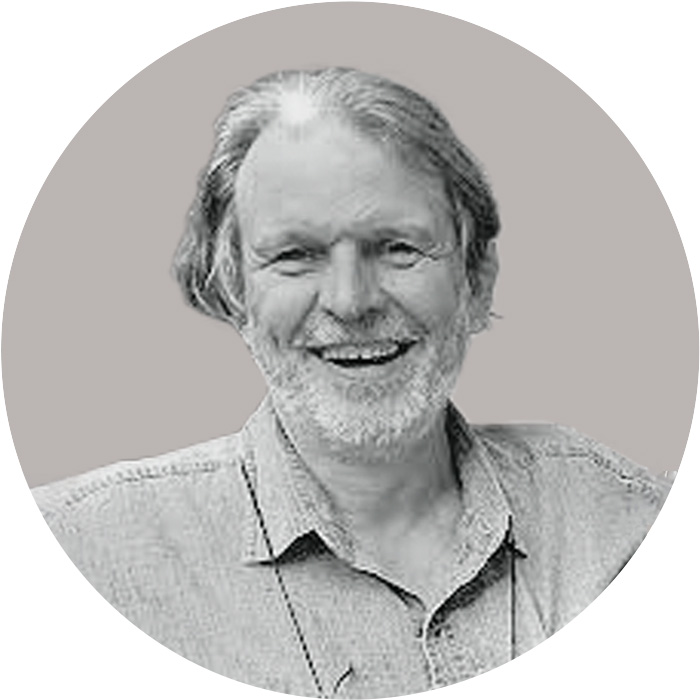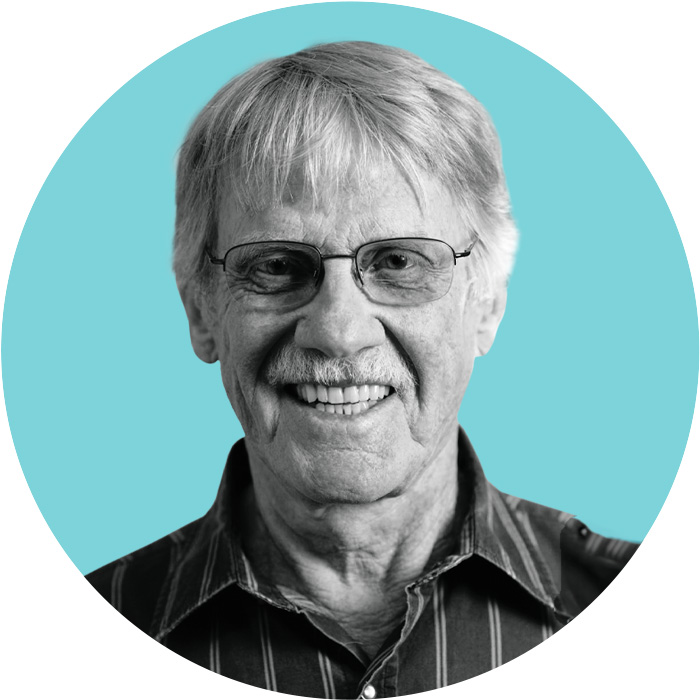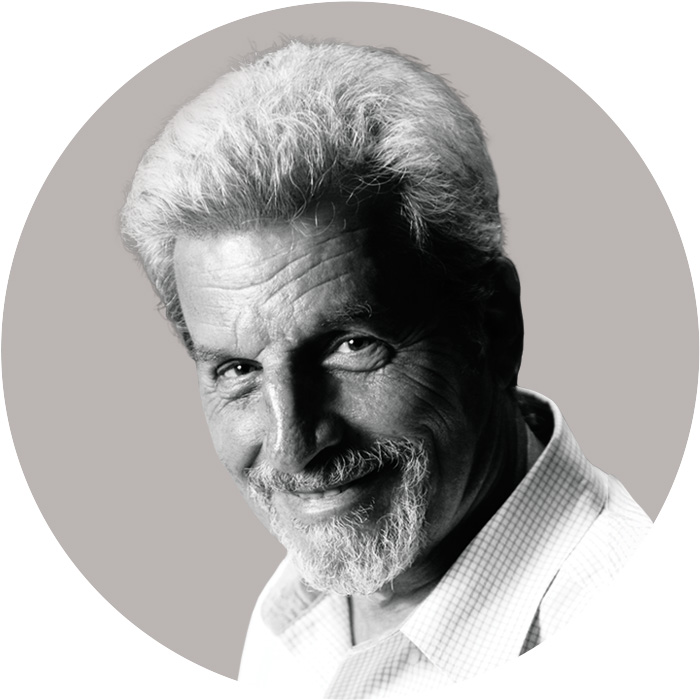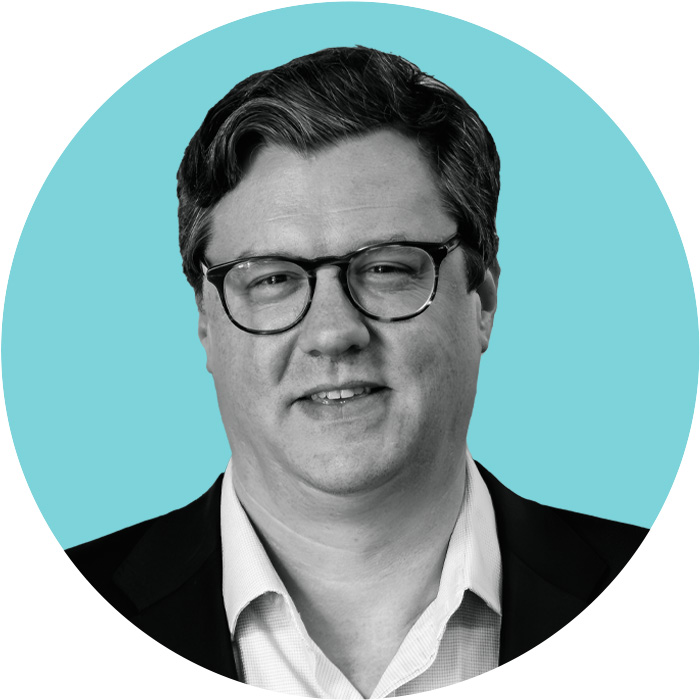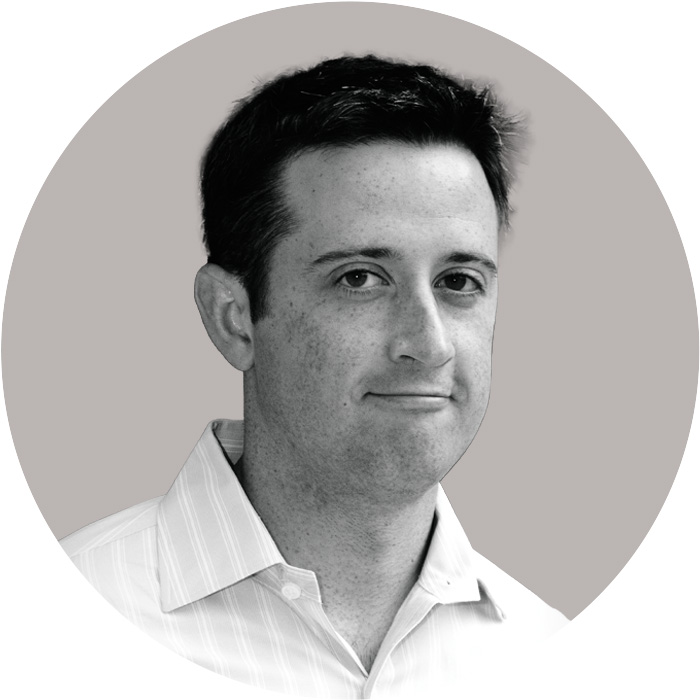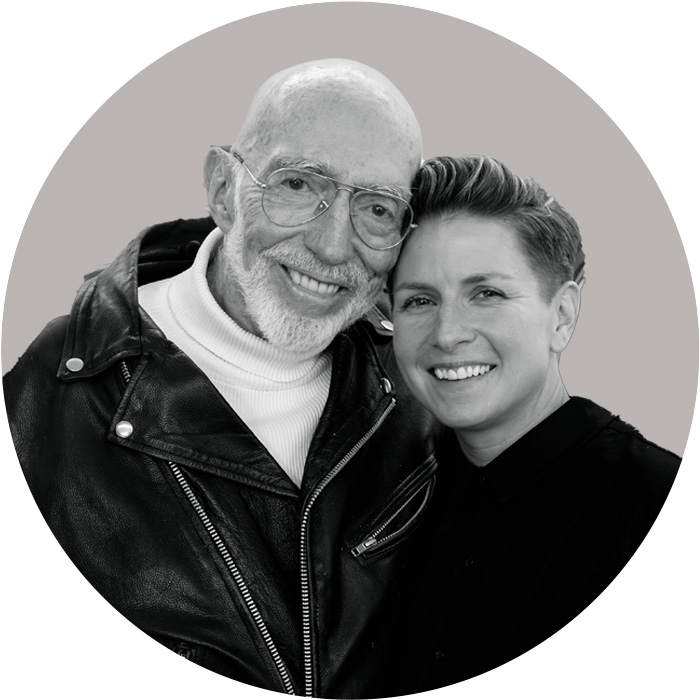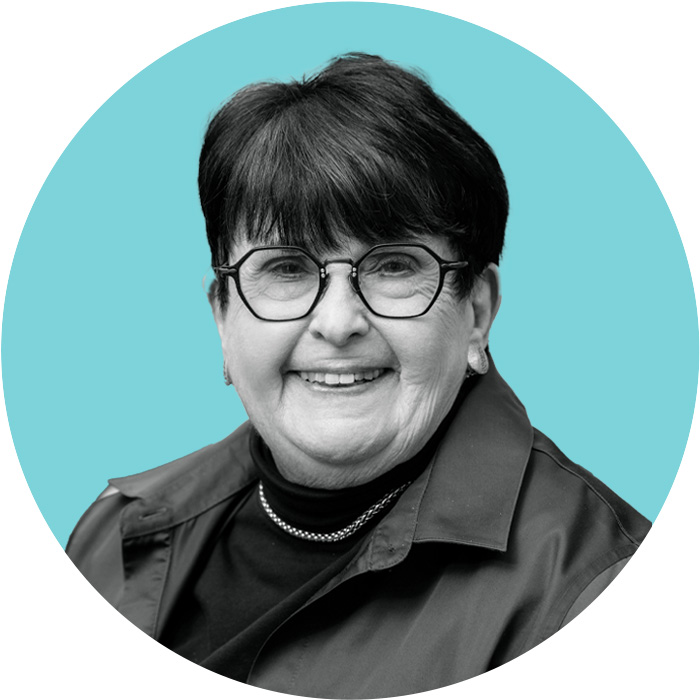How Daniele Struppa Built a Next-Level Research Culture at Chapman University
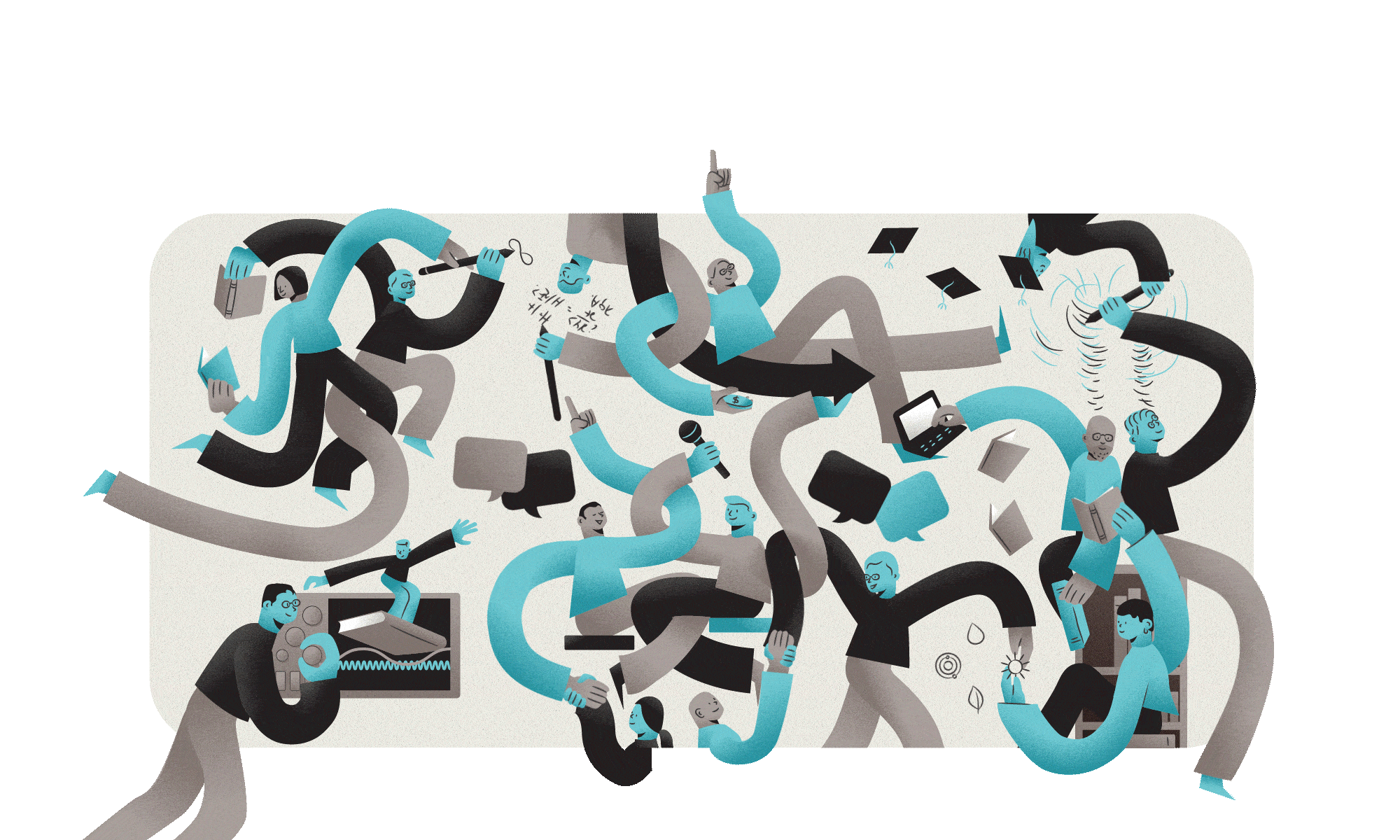

Feature

BUILDING A NEXT-LEVEL RESEARCH CULTURE TOOK AN AVALANCHE OF SKILLED SCHOLARS BUT ALSO A PRESIDENT FIRED UP ABOUT COLLABORATION.


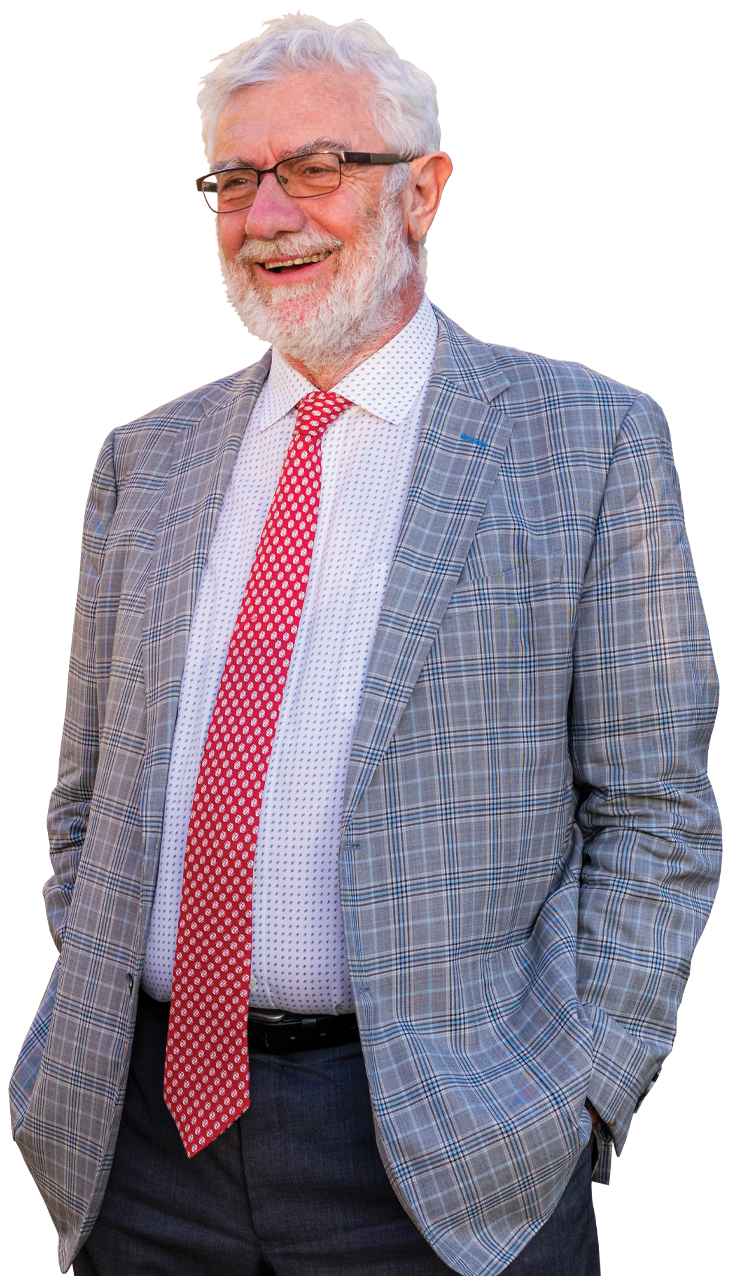

> President Daniele Struppa
Transformational Vision Sparks R2 Journey
The joy of discovery first captured Struppa in childhood, when he fell in love with mathematics and started a journey that has led to the heights of research scholarship. He has edited or co-authored more than 10 books and collaborated on more than 200 research publications, including one in 2016 that earned the prestigious Cozzarelli Prize from the National Academy of Sciences. Most recently, Struppa was inducted as an honorary member of the Accademia Gioenia di Catania in recognition of his scientific achievements. The Accademia Gioenia was founded in 1824 with the purpose of advancing scientific research in the area of natural history. It has since expanded its attention to all of the sciences as well as history and philosophy of science. His work focuses on Fourier analysis, a mathematical method used to study and solve various problems, and its application to a variety of issues such as analyzing systems of equations, improving signal processing and recognizing patterns in data. Recently, he has applied these techniques to solve problems in areas like reducing noise in data, protecting against harmful bio-contaminants and studying cancer cells through proteomics—the study of proteins.
During President Struppa’s 19 years at Chapman, including 10 as chief academic officer, he has been just as impactful—both the guiding light and connective tissue inside the university’s burgeoning research culture.
The result has been nothing short of transformational.
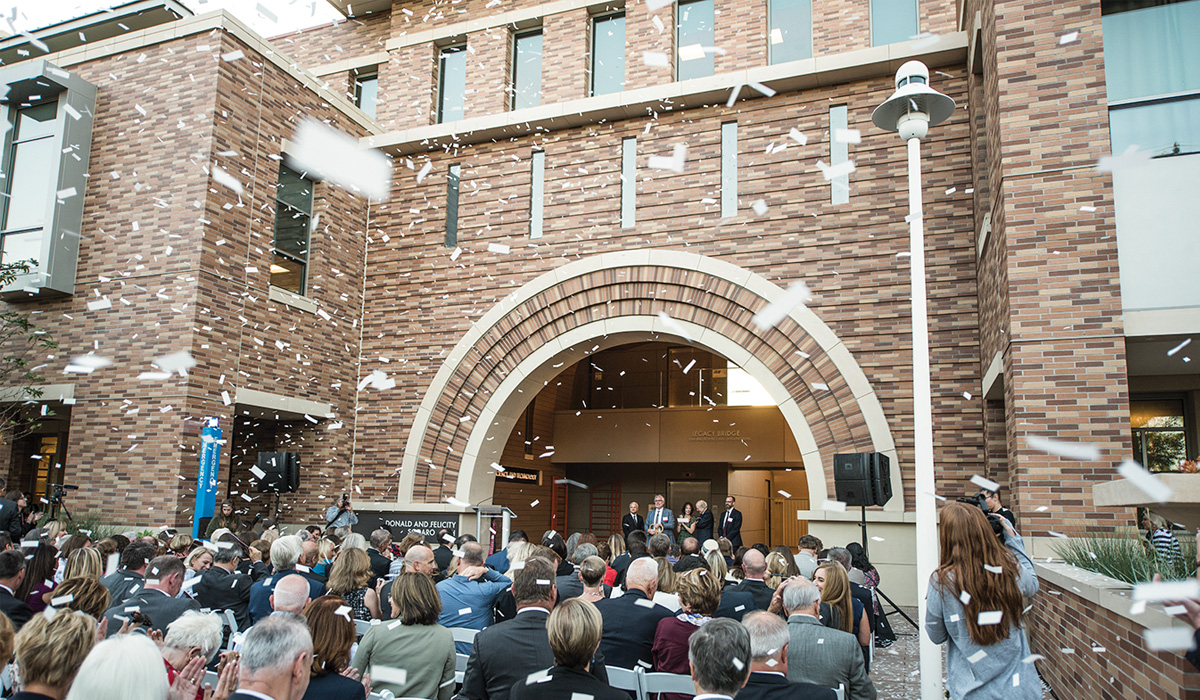
Chapman President Daniele Struppa celebrates the opening of the Keck Center, marking a milestone in the university’s rise as a center of scientific research and learning.
First as provost and chancellor, then as university president, Struppa has helped lead Chapman’s rise from a regional teaching school to an internationally recognized R2 research institution. Only 10% of U.S. universities have the R2 designation.
Also during that time, Chapman has successfully recruited dozens of nationally and internationally prominent scholars, as it has increased faculty research citations by 2,000% and boosted patent and invention disclosures by 133%. Along the way, Chapman has added cutting-edge institutes, labs, lasers and other research infrastructure such as the Keck Center for Science and Engineering—the largest building project in its history.


“Chapman’s ability to achieve status as a research institution has much to do with the enhanced focus on our academic reputation as well as President Struppa’s personal academic reputation and the resulting ability to attract top-tier academic talent,” said Jim Roszak, who has served for nearly 30 years on the university’s Board of Trustees. “Daniele has been excellent at carefully allocating resources to support that effort, and it’s clearly paying off.”
Struppa is the first to point out that Chapman was already ascending when he arrived from George Mason University in 2006. Jim Doti was in the middle of his 25-year quantum-leap presidency, which saw Chapman greatly increase the quality of the student body as well as strengthen financials, bolster the faculty, amplify enrollment and develop new schools and buildings.
“One of the reasons I accepted the job is that I saw the structure and I thought there were lots of possibilities for taking things to a new level,” Struppa said. “I remember sitting in Jim’s office and hearing him say that he wanted Chapman to become a top institution. I said, ‘We can do it, but it’s going to take a lot of work and sustained investment.’ He said, ‘Let’s do it.’”
Nobel Laureate Adds Momentum to the Rise
Over the next 18-plus years, Struppa has supercharged a research boom at Chapman, a school previously known for its focus on personalized teaching.
A cornerstone of that transformation was convincing globally significant scholars to buy into his vision of Chapman as a research destination. Struppa’s first recruit was Nobel Prize-winning economist Vernon Smith, now the George L. Argyros Endowed Chair in Finance and Economics at Chapman, where he holds leadership roles with the Smith Institute for Political Economy and Philosophy, and the Economic Science Institute.
Talk about a swing for the fences.
“I think he came because he trusted me,” Struppa said simply. “He and I had been talking and I had been listening for years. I think he had come to trust me as a person of my word.”
Smith wasn’t the last to show such trust. Internationally renowned theoretical physicist Yakir Aharonov also came to Chapman, where he has gone on to win the National Medal of Science. His groundbreaking work remains at the heart of research in Chapman’s Institute for Quantum Studies.
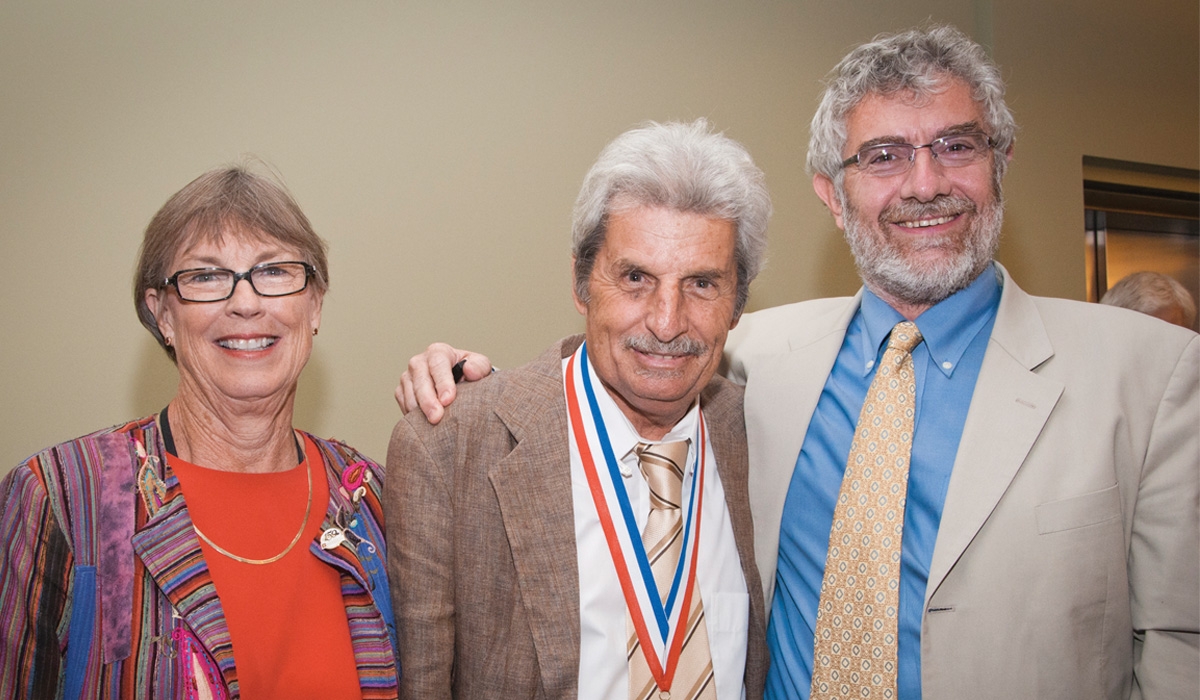
Chapman President Daniele Struppa (far right) with renowned theoretical physicist and professor Yakir Aharonov (middle) and retired dean of Leatherby Libraries Charlene Baldwin.
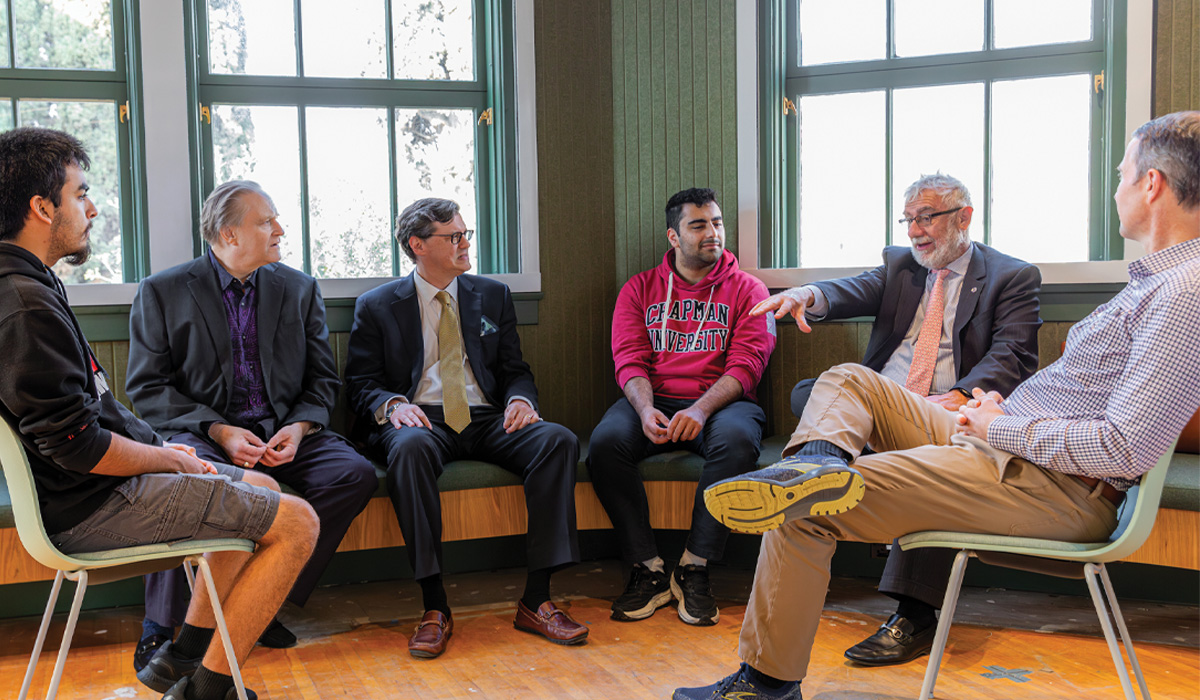
The new Institute for Quantum Studies building will serve as a collaborative space for students and educators to discuss and research groundbreaking topics in quantum physics.
> Parker Kennedy, past chair of the Chapman Board of Trustees
Two ‘Beacons for Researchers Around the World’
Smith and Aharonov exemplify what Struppa calls “the avalanche effect”—the weight of their scholarship adding velocity to Chapman’s research momentum.
“Vernon and Yakir are like beacons for researchers around the world,” Struppa said. “It’s because of Yakir that we were able to hire Andrew Jordan, and Andrew helped us recruit John Howell.”
Jordan and Howell both brought their internationally prominent research groups to Chapman. The physicists and other colleagues recently co-authored a paper on breakthrough radar research with high value to multiple industries.
“Researchers of high quality recognize others of high quality,” Struppa said.
Parker Kennedy, the immediate past chair of the Chapman Board of Trustees, has seen first-hand the impact of the avalanche effect. He recently asked a Chapman faculty member what had attracted him to Chapman. Though he wasn’t in economics, the professor said, “Because Vernon Smith is here.”
“That kind of credibility has taken us to a new level, and Daniele has helped kick that into gear,” Kennedy said. “He has a combination of qualities that make him a strong recruiter. His great academic skills combine with a wonderful personality that draws people to him.”
Breaking Bread, Creating Connection
Like many of the scholars who have signed on at Chapman, Smith fielded Struppa’s pitch as the two shared a meal. It has become something of a legend at the university that if you go to lunch with Daniele Struppa, get ready for your life to change.
In 2008, Larry Iannaccone went to such a lunch. He said it was the first time in his career of cutting-edge crossover research on religion, economics and culture that an administrator had asked him to share his vision for adding new breakthroughs to his body of work.
Iannaccone was hooked. In short order he became the founding director of the Institute for the Study of Religion, Economics and Society at Chapman, where he and high-profile colleagues like Jared Rubin and Christopher Bader now publish widely, host an annual conference and welcome prominent visiting scholars.
“Here’s this mathematician who’s interested in research that spans the hard sciences to the humanities,” Iannaccone said. “And after decades in administration, he’s still curious, even fascinated – and still doing his own first-rate research.”
> Marco Panza, Kennedy Chair in Philosophy
Otherworldly Impact Begins at Home
It’s not just recruits from outside the Chapman faculty who’ve been invigorated by the university’s vibrant research culture and its marshaling of cross-disciplinary resources.
“Daniele gave everyone here a reason to be excited and to believe in themselves,” said Lia Halloran, chair of the Department of Art. “We’re encouraged to push even farther and to reach out to new collaborators—to create a research community that includes our students.”
With her uniquely kinetic paintings, Halloran bridges art and astrophysics, often on an epic scale. Her latest collaboration is with Nobel Prize-winning physicist Kip Thorne. Their book of verse and illustrations, “The Warped Side of the Universe,” elucidates otherworldly wonders like colliding black holes and collapsing wormholes.
Halloran’s award-winning art practice connects with her innovative teaching via courses like “The Origins of Art and Science,” in which she took students to Florence to explore how seemingly disparate disciplines intertwined during the Renaissance.
“I’ve always felt that whenever I’ve seen a pressing topic in contemporary art there was a place for it at Chapman,” Halloran said. “Here, there is this idea that innovation—encourages us to make sure our students come along for the ride. It’s woven into the fabric of what Chapman has grown to be. I credit Daniele for a lot of that.”
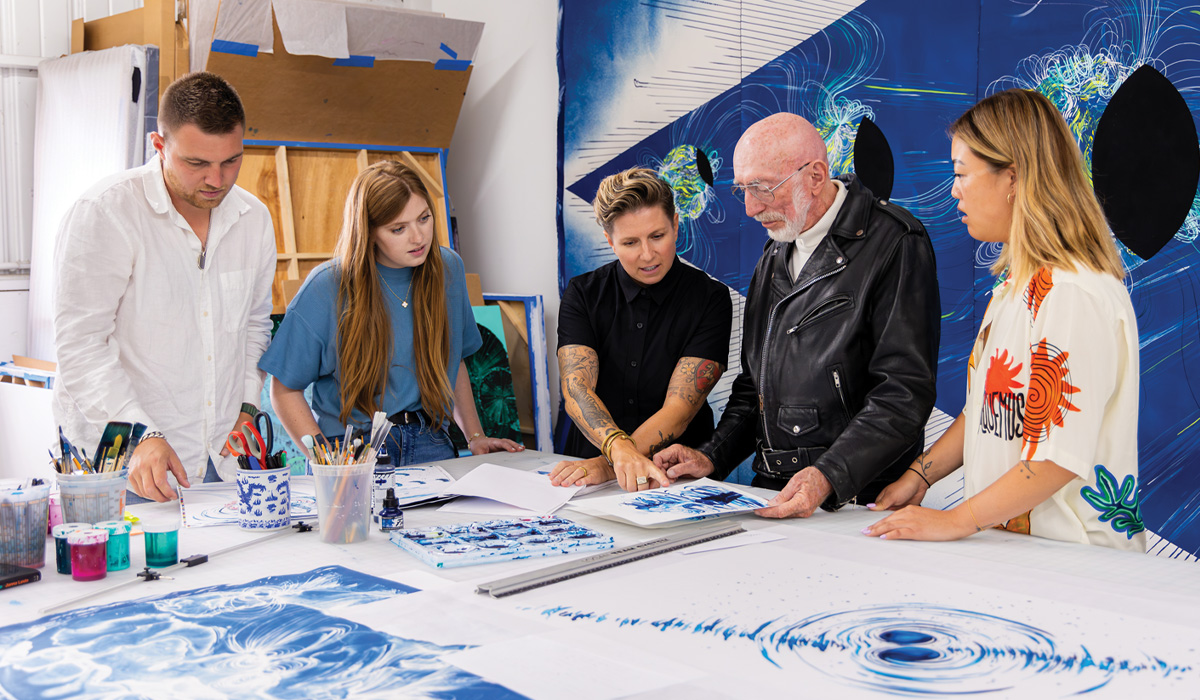
Art Department Chair Lia Halloran (center) collaborated with Nobel Prize-winning physicist Kip Thorne (second from right) to produce a groundbreaking book that bridges art and astrophysics.
It’s not surprising to his colleagues that Struppa deflects such credit.
“That’s Daniele,” said Marilyn Harran, Stern Professor of Holocaust Education and director of the Sala and Aron Samueli Holocaust Memorial Library and the Rodgers Center for Holocaust Education.
“He could easily have created a community where he would be ‘the first’—the best scholar, the smartest person in the room,” Panza said. “But he has always tried to be ‘the last’—to have great people around him.”
‘Amazing People in Virtually Every Department’
It’s not false modesty that motivates him to pass the praise to others, Struppa said.
“A vision is only good if people buy in and want to participate,” he said. “When I say it’s not me but the university, it’s because none of this would be possible without the Faculty Senate, without the support of the deans, without Executive Vice President and Chief Operating Officer Harold Hewitt, without the donors. Nothing would be possible without the Board of Trustees.”
As he looks ahead, Struppa is convinced that Chapman’s research foundation is unshakable, the momentum accelerating, the collaborative culture still growing.
“The university has a tremendous future,” he said. “We have amazing people in virtually every department.”
In September 2025, when Struppa will leave the presidency and go full-force back into the classroom and full-time into research mode, he knows that Chapman’s commitment to major impact will endure.
“A university has to be a place where big ideas are discussed outside the confines of a single perspective or discipline,” he said. “It has to be an environment where everything communicates with everything else. That’s our path.”
Struppa isn’t waiting to dive into the host of research projects on his mental white board. He’s excited about the book project with Panza, as he is about another collaboration, this one with a Greek philologist, in which they will study an analysis that considers a commentary of a Plato dialogue from the year 1000.
Plus, at six each morning, he is up learning Arabic so that when he’s fluent in a few years he can read some original manuscripts of ancient texts on mathematics.
“You can probably tell from talking with me I’m very enthusiastic,” Struppa said. “I’m really thirsty for this.”
For the research colleagues with whom Struppa will partner across multiple disciplines during the years ahead, the challenge will remain what it always has been. Tap into his energy and then add exponentially to the flow of ideas.
“The real impact of Daniele on Chapman is to be Daniele,” Panza said with a laugh. “He is not just rare. He is unique.”
Photography and Videography by Adam Hemingway
Design by Julie Kennedy and Vivian To
Media Contacts
Strategic Marketing and Communications
1 University Drive
Orange, CA 92866
Contact Us
Newsroom Site
Your Header Sidebar area is currently empty. Hurry up and add some widgets.
